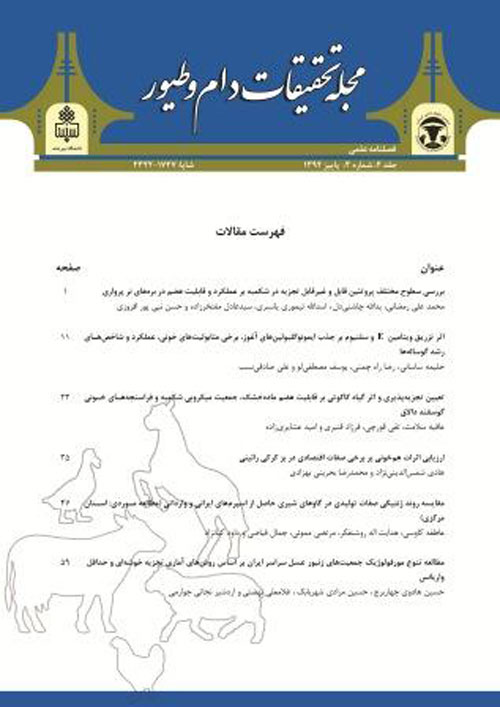Effect of dietary protein levels and type of feed formulation on production and economic performance of broilers with approximate body weight of 1 kg
Author(s):
Abstract:
An experiment was conducted in a 3×3 factorial arrangement (three different dietary protein levels: Cobb recommendation, 10 and 20 percents lower than that, and three types of feed formulations: 1- diet composed of corn and soybean as a control diet, 2-diet in which wheat, barley, wheat bran and poultry by-product mealwhich were substituted partially instead of corn and soybean of the first diet and its total sulfur containing amino acids, lysine and threonine were equal to total of these amino acids as per first diet and 3- diet which was similar to the second one but its digestible sulfur amino acids, lysine and threonine were equal to digestible amino acids in the first diet.In total, nine dietary treatments and four replicates of 10 chicks per eachtreatment were applied in a completely randomized design. Growth period of broilers was 28 days and they received starter diet at 1-10 days, grower diet at 11-24 and finisher diet at 25-28 days of age. The Interaction effect of diet type and dietary protein level on feed conversion ratio, production index, feed cost to gain and monetary returns per chickens was significant (P<0.05). As in diets formulated based on total amino acids a 10% reduction in dietary protein level resulted in a significant decrease in production index and monetary returns and increase in feed conversion ratio and feed cost to live weight however, in diets formulated based on digestible amino acids 10% reduction in dietary protein in spite of 20% reduction in dietary crude protein causes no significant difference in monetary returns, fed conversion ratio and feed cost to live weight in comparison with group their dietary crude protein was based on Cobb recommendation.
Keywords:
Language:
Persian
Published:
Journal of Livestock Research, Volume:2 Issue: 4, 2014
Page:
59
https://magiran.com/p1307354


